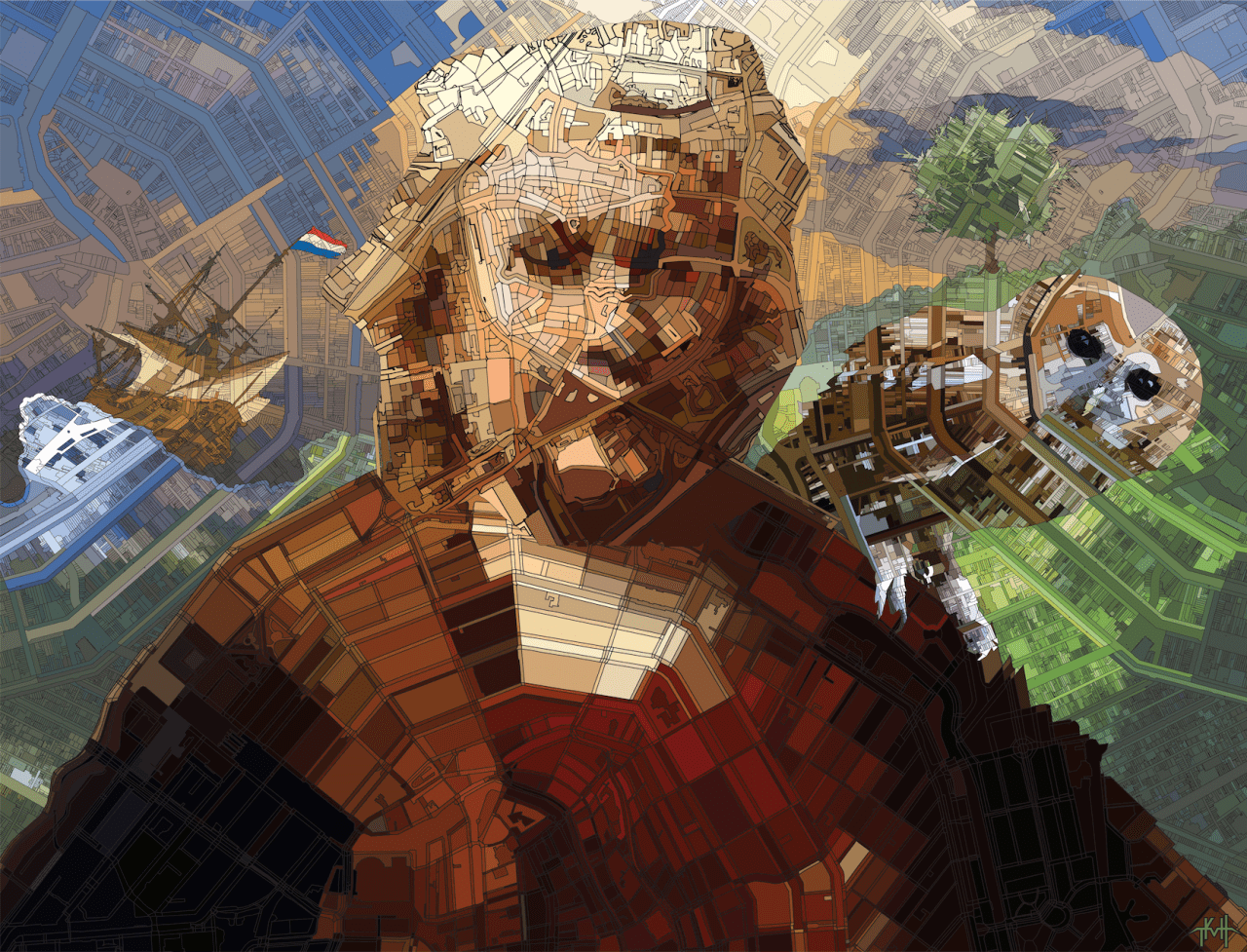My work “Rembrandt van Uylenburgh” is made from maps of the two places where he lived, Leiden and Amsterdam, with other symbols telling the story of his life.
My piece was one of the 575 works selected out of the 8,395 pieces submitted from artists across 95 different countries, as part of the Lang Leve (Long Live) Rembrandt exposition from 15 July to 15 September, 2019 with Amsterdam’s Rijksmuseum. The exhibit commemorates the 350th anniversary of Rembrandt van Rijn’s death (1606-1669), and opened to the public on Rembrandt’s 413th birthday, July 15, 2019. See the Rijksmuseum website for details.
Each parcel of land in the work is individually colored with the aim of capturing light, which Rembrandt was known for in his paintings, like a stained glass window. Rembrandt’s face contains the map of his birthplace, Leiden, and his bust the characteristically curving canals of Amsterdam. The horizon also includes a contour of the Rijn River, in reference to Rembrandt’s last name. The owl on his shoulder symbolizes his wife, Saskia van Uylenburgh (‘uyl’ in old Dutch language translates to ‘owl’), who died in 1642 at the early age of 29. He painted this self-portrait after her death, in 1643. The tree on the hill is rosemary, an herb symbolizing marital trust and the strong bond between the couple, even after her death. The ship on the left is a reference to the Golden Age, an era when painters uniquely expressed the indulgences of the time.
